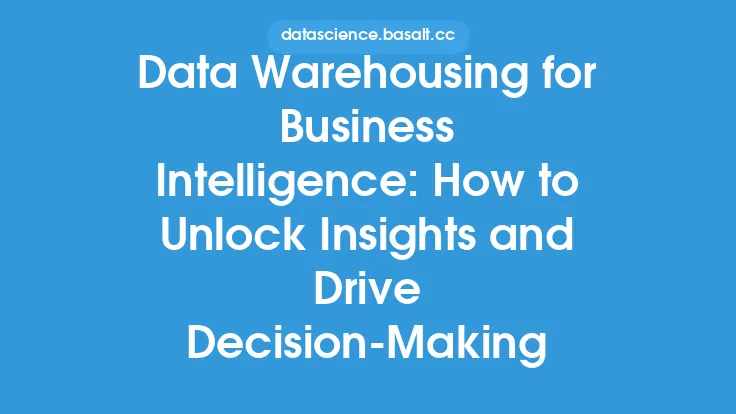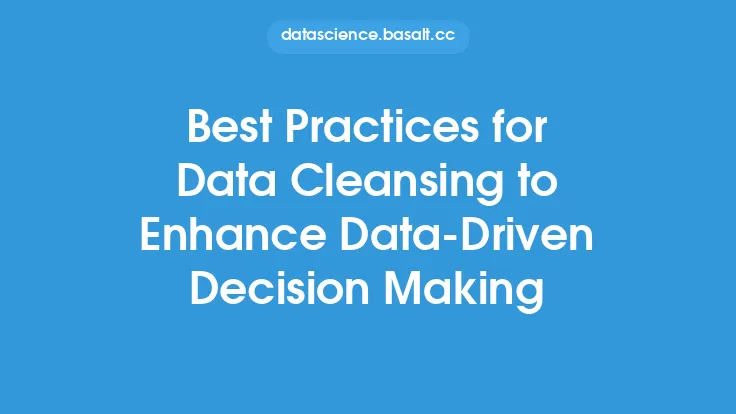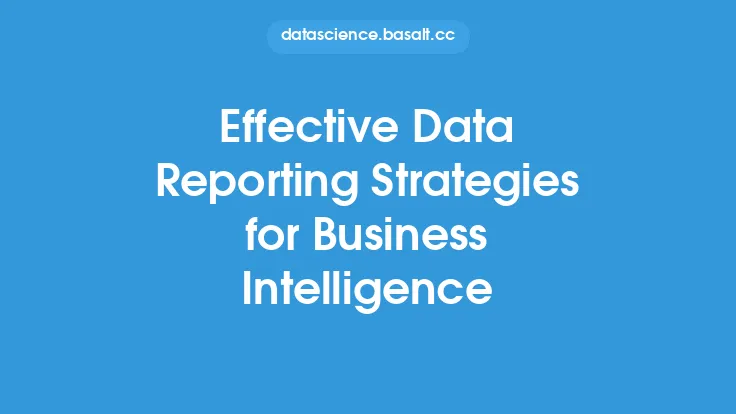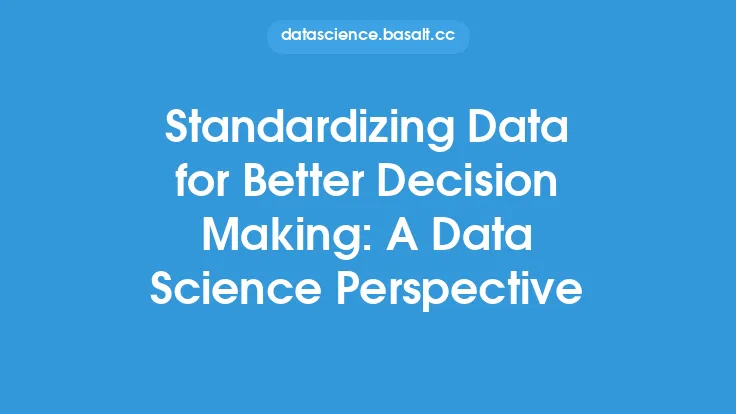Data reporting is a crucial aspect of data analysis, as it enables organizations to extract insights from their data and make informed decisions. A well-structured data reporting framework is essential to ensure that reports are accurate, reliable, and relevant to the decision-making process. In this article, we will explore the key components of a data reporting framework and provide guidance on how to implement it effectively.
Introduction to Data Reporting Frameworks
A data reporting framework is a structured approach to collecting, analyzing, and presenting data in a way that supports decision-making. It involves defining the reporting requirements, identifying the relevant data sources, and establishing a process for data extraction, transformation, and loading. A good framework should be flexible, scalable, and adaptable to changing business needs. It should also ensure data quality, integrity, and security, as well as provide a clear understanding of the reporting metrics and key performance indicators (KPIs).
Key Components of a Data Reporting Framework
A data reporting framework consists of several key components, including:
- Data Sources: Identifying the relevant data sources is critical to ensuring that reports are accurate and reliable. This includes internal data sources, such as databases and data warehouses, as well as external data sources, such as social media and customer feedback.
- Data Extraction: Data extraction involves retrieving data from the identified sources and transforming it into a format that can be used for reporting. This may involve using data extraction tools, such as ETL (Extract, Transform, Load) software, or writing custom scripts to extract data from APIs or other sources.
- Data Transformation: Data transformation involves converting the extracted data into a format that is suitable for reporting. This may involve aggregating data, handling missing values, and performing data quality checks.
- Data Loading: Data loading involves loading the transformed data into a reporting database or data warehouse. This may involve using data loading tools, such as ETL software, or writing custom scripts to load data into a database.
- Reporting Metrics: Defining the reporting metrics and KPIs is critical to ensuring that reports are relevant and useful to the decision-making process. This involves identifying the key metrics that need to be tracked and measured, such as sales revenue, customer satisfaction, or website traffic.
- Reporting Tools: Selecting the right reporting tools is essential to ensuring that reports are interactive, intuitive, and easy to use. This may involve using business intelligence software, such as Tableau or Power BI, or custom-built reporting tools.
Data Reporting Process
The data reporting process involves several stages, including:
- Requirements Gathering: Gathering reporting requirements from stakeholders is critical to ensuring that reports meet their needs. This involves identifying the key metrics and KPIs that need to be tracked and measured.
- Data Design: Data design involves defining the data structures and relationships that will be used to support reporting. This may involve creating a data model or designing a database schema.
- Data Development: Data development involves building the reporting database or data warehouse and loading the data into it. This may involve using data development tools, such as ETL software, or writing custom scripts to load data into a database.
- Reporting Development: Reporting development involves building the reports and dashboards that will be used to support decision-making. This may involve using reporting tools, such as business intelligence software, or custom-built reporting tools.
- Testing and Quality Assurance: Testing and quality assurance involve ensuring that reports are accurate, reliable, and meet the reporting requirements. This may involve performing data quality checks, testing reports with sample data, and validating report results.
Data Reporting Best Practices
To ensure that data reporting is effective and efficient, several best practices should be followed, including:
- Define Clear Reporting Requirements: Defining clear reporting requirements is critical to ensuring that reports meet the needs of stakeholders.
- Use Standardized Reporting Metrics: Using standardized reporting metrics ensures that reports are consistent and comparable across different departments and teams.
- Ensure Data Quality: Ensuring data quality is critical to ensuring that reports are accurate and reliable.
- Use Interactive Reporting Tools: Using interactive reporting tools, such as business intelligence software, enables users to explore data in real-time and gain deeper insights.
- Provide Training and Support: Providing training and support to users is essential to ensuring that they can use reports effectively and efficiently.
Data Reporting Challenges
Data reporting can be challenging, especially when dealing with large and complex datasets. Some common challenges include:
- Data Quality Issues: Data quality issues, such as missing or duplicate data, can affect the accuracy and reliability of reports.
- Data Integration: Integrating data from multiple sources can be challenging, especially when dealing with different data formats and structures.
- Scalability: Scaling data reporting to meet the needs of a growing organization can be challenging, especially when dealing with large and complex datasets.
- Security: Ensuring the security and integrity of data is critical, especially when dealing with sensitive or confidential information.
- User Adoption: Encouraging user adoption of reports and dashboards can be challenging, especially when users are not familiar with data analysis or reporting tools.
Conclusion
Data reporting is a critical aspect of data analysis, as it enables organizations to extract insights from their data and make informed decisions. A well-structured data reporting framework is essential to ensuring that reports are accurate, reliable, and relevant to the decision-making process. By following best practices, such as defining clear reporting requirements, using standardized reporting metrics, and ensuring data quality, organizations can create effective and efficient data reporting systems that support their business goals and objectives.





